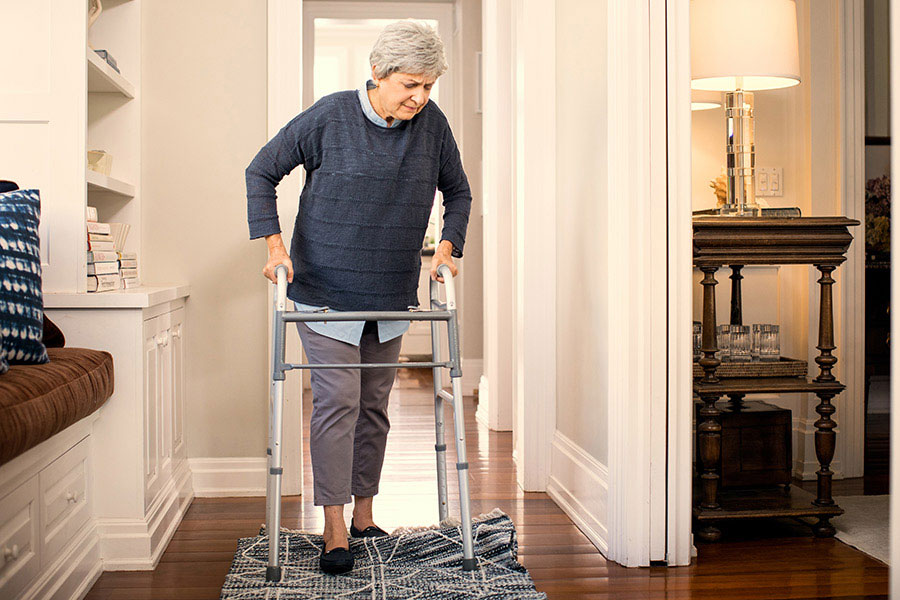Aging in place is a popular choice among seniors who wish to maintain their independence and live comfortably in their own homes. One significant aspect that supports this lifestyle is the implementation of fall detection technology. Understanding how fall detection supports aging in place can provide peace of mind to both seniors and their families.

The Importance of Aging in Place
The concept of aging in place revolves around the ability of older adults to live in their own homes and communities safely, independently, and comfortably, regardless of age, income, or ability level. It is a preferred arrangement for many seniors who value their independence and wish to avoid the costs and lifestyle changes associated with moving to assisted living facilities.
The Role of Fall Detection
Falls are a leading cause of injury among seniors, often resulting in severe consequences such as broken bones, head injuries, or even death. By utilizing fall detection systems, seniors can reduce the risk of prolonged suffering and receive immediate assistance, thus supporting their choice to age in place.
How Does Fall Detection Work?
Fall detection devices employ sensors and algorithms to monitor the user’s movements. When a fall is detected, the device can automatically alert emergency contacts or medical services, ensuring prompt response and care. This technology is crucial in minimizing the time a senior might spend unattended after a fall.
Types of Fall Detection Devices
- Wearable Devices: These include pendants, watches, or belts that are equipped with fall detection sensors.
- Smartphones: Some mobile phones come with built-in fall detection features.
- Smart Home Systems: These integrate with home automation to provide comprehensive support.
For more detailed information on the types of devices, refer to this article on Smartphones vs Dedicated Devices.
Benefits of Fall Detection in Aging in Place
Implementing fall detection systems offers numerous benefits, reinforcing the concept of aging in place.
Enhanced Safety
With fall detection, seniors are safer in their homes. The technology provides an extra layer of security, ensuring that help is available when needed.
Increased Independence
Knowing that fall detection devices are in place allows seniors to maintain a higher level of independence, enabling them to go about their daily activities without the constant fear of falling.
Peace of Mind for Family Members
Family members can feel more at ease knowing their loved ones are monitored and protected, even when they are not physically present. This peace of mind is invaluable in reducing the stress associated with caring for aging relatives.
Cost-Effectiveness
Fall detection technology can be a cost-effective alternative to assisted living facilities. By preventing serious injuries and ensuring timely medical intervention, these devices help avoid expensive medical bills and long-term care costs.
Integrating Fall Detection with Daily Living
Integrating fall detection into daily living involves choosing the right device, understanding its functionality, and ensuring it fits seamlessly into the senior’s lifestyle. For example, wearable devices should be comfortable and easy to use, while smart home systems should align with the senior’s existing technology.
Challenges and Considerations
While fall detection is beneficial, there are challenges to consider:
Technology Acceptance
Seniors may be resistant to adopting new technologies. It’s crucial to provide support and education to help them understand the benefits and ease of use.
Cost and Accessibility
Although cost-effective in the long run, the initial investment in fall detection devices can be a barrier. Exploring options and financial aids can help mitigate this challenge.
The Future of Fall Detection
The future of fall detection technology is promising, with advancements in AI and machine learning paving the way for more accurate and reliable systems. These innovations will continue to enhance the ability of seniors to age in place safely.
Conclusion
Understanding how fall detection supports aging in place is crucial for seniors and their families. By offering enhanced safety, increased independence, and peace of mind, fall detection technology plays a pivotal role in enabling seniors to live comfortably in their own homes.

FAQs
What is fall detection?
Fall detection is a technology that uses sensors to monitor movements and detect falls, automatically alerting emergency contacts or services.
Why is fall detection important for aging in place?
Fall detection provides safety and peace of mind, allowing seniors to live independently while ensuring help is available if needed.
Can fall detection devices prevent falls?
While they cannot prevent falls, these devices can ensure timely assistance after a fall, reducing the risk of further injury.
For more information on fall prevention strategies, visit Best Fall Prevention Strategies.
For expert insights on maintaining physical activity to reduce fall risk, check out Physical Activity Insights.
This article contains affiliate links. We may earn a commission at no extra cost to you.

